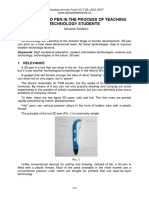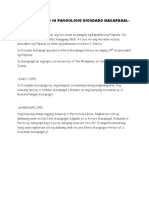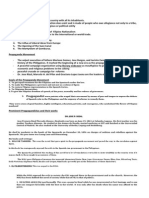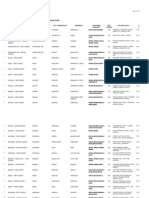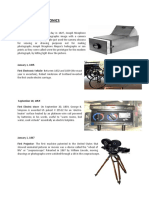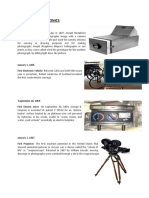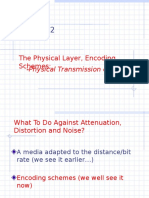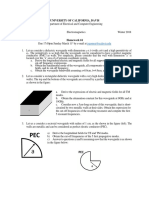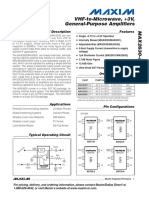0% found this document useful (0 votes)
760 views13 pagesElectronics Timeline
The document provides a timeline of major discoveries and inventions in the field of electronics from 600 BC to 1998 AD. Some of the key events included Thales of Miletus discovering static electricity in 600 BC, William Gilbert coining the term "electric" in 1600, the invention of the battery by Alessandro Volta in 1800, Michael Faraday's discoveries around induction and invention of the transformer in the 1830s, Alexander Graham Bell inventing the telephone in 1876, Thomas Edison inventing the phonograph and incandescent light bulb in 1877 and 1879 respectively, and the invention of the integrated circuit in 1958.
Uploaded by
Dreian Calaoagan PalalayCopyright
© © All Rights Reserved
We take content rights seriously. If you suspect this is your content, claim it here.
Available Formats
Download as DOC, PDF, TXT or read online on Scribd
0% found this document useful (0 votes)
760 views13 pagesElectronics Timeline
The document provides a timeline of major discoveries and inventions in the field of electronics from 600 BC to 1998 AD. Some of the key events included Thales of Miletus discovering static electricity in 600 BC, William Gilbert coining the term "electric" in 1600, the invention of the battery by Alessandro Volta in 1800, Michael Faraday's discoveries around induction and invention of the transformer in the 1830s, Alexander Graham Bell inventing the telephone in 1876, Thomas Edison inventing the phonograph and incandescent light bulb in 1877 and 1879 respectively, and the invention of the integrated circuit in 1958.
Uploaded by
Dreian Calaoagan PalalayCopyright
© © All Rights Reserved
We take content rights seriously. If you suspect this is your content, claim it here.
Available Formats
Download as DOC, PDF, TXT or read online on Scribd
/ 13













